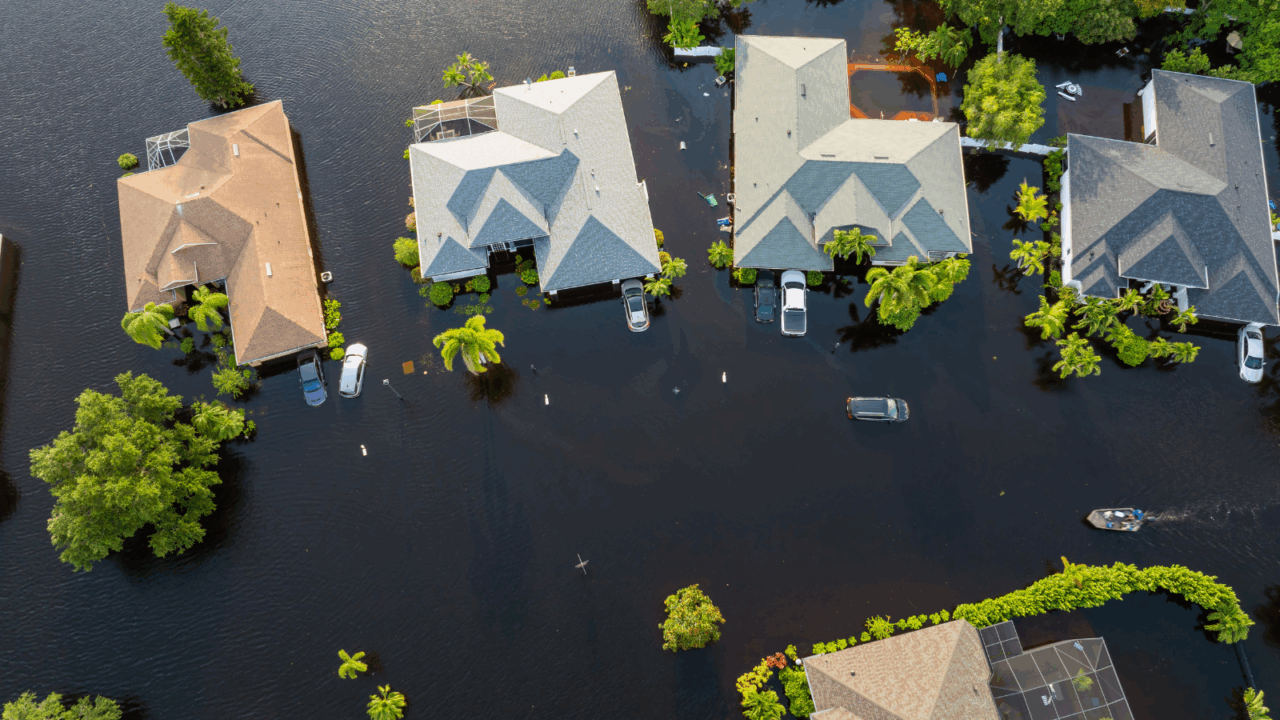As severe weather events become more frequent and costly, contractors face a greater risk of downtime on projects. Few industries have also felt the ripple effects of materials costs and supply-chain disruptions quite like construction.
Combined, both trends pose a significant risk for longer, costlier business interruptions. This is in an industry where on-time and on-budget projects are at a premium.
While there are positive indications that the supply chain and construction economy may improve, there are limiting factors. Higher project financing rates have affected profitability, while construction input costs remain 39% higher than pre-pandemic levels.
As financial uncertainty heightens, businesses can’t afford to go under-protected from the growing risk of severe weather and unexpected interruptions in 2024. Here’s how to prepare for the next “what-if” scenario and the potential disruption that could follow.
1. UNDERSTAND AND PREPARE
2023 ended with a record 28 climate disasters in the United States that exceeded billion in damage. These events during the warmest year on record spanned from water damage to wildfires. Most were severe storms throughout the country that consisted of high winds and hail.
The threat of a severe storm impacting construction projects is real: anywhere and at any time.
Commercial contractors in particular have unique risks. Materials and equipment can be damaged on a jobsite, enroute to one or offsite. And because so many operations are outdoors, construction businesses often see higher severe weather risk than others.
Preparing project sites for extreme weather starts with awareness and preventative measures. Here are a few general rules of thumb:
- Understand common severe weather risks near the project site during each season.
- Check local short- and long-term forecasts regularly.
- Sign up for severe weather notifications or community alerts.
- Regularly complete severe weather drills with employees.
- Store loose materials, tools and equipment.
- Shut down and unplug all machinery and equipment.
- Secure scaffolding and avoid using high-elevation equipment like cranes during high winds.
- Transport vehicles and heavy equipment to a secure, protected location.
- Maintain accessible fire extinguishers.
While this initial list of reminders can serve as a starting point, it’s not one-size-fits-all. Preventative measures should adapt to the type of project, severe weather risk and immediacy of the storm.
2. DEVELOP A PLAN
Extreme weather doesn’t just pose a risk to property. It poses a risk to employees and subcontractors. Develop an action plan for every project so employees know what to do when a weather emergency strikes.
Emergency equipment: Determine the type, quantity and placement of emergency equipment such as alarm systems, first aid supplies and firefighting equipment. Provide training as needed and inspect the equipment regularly.
Exits: Evaluate exits for prominence, safety and easy access. Walk through scenarios to ensure orderly exit procedures in the event of an emergency.
Evacuating employees: Create a clear, defined evacuation plan that gives workers direction for an orderly exit. Form an emergency response committee to create and communicate the plan, train employees and assign responsibilities.
Communications: Routinely share emergency action plans with employees. An informed group is more likely to respond to an emergency effectively.
3. UPDATE INSURANCE
Protecting workers and mitigating property damage are somewhat within control.
Still, adverse weather delays 45% of construction projects worldwide, according to a 2021 report by the Air Force Institute of Technology. The financial cost of delays and disruption can cost the industry billions of dollars in extra expenses and lost revenue each year. In fact, the cost of delays often overshadows physical damage costs.
On top of that, catastrophic storms can create supply bottlenecks as demand spikes for replacement materials and equipment. This, too, can lead to longer delays.
Resuming operations can often take weeks and, in some cases months, longer than it did just a few years ago.
A risk of this magnitude often requires a combination of safety, planning and insurance. Business interruption coverage—including extra expense—can help mitigate financial losses experienced during project delays. It can help cover expenses like payroll, lost revenue and extra costs needed to keep operations running.
While the supply chain has shown signs of improvement, businesses should review the amount of coverage in their policy to account for longer recovery timelines. For example, a business may need three years’ worth of coverage compared with six months a few years ago.
In a similar regard, inflation has increased repair costs for supplies and equipment. It’s important to review builder’s risk and installation floater coverages. An agent or carrier can help ensure equipment, tools, materials and property are insured to reflect the latest costs of repairing or replacing them.
PLAN NOW BEFORE BREAKING GROUND
Risk exists on and throughout every jobsite in the country. Yet the most successful businesses are the ones who build in resiliencies to help protect their team and bottom line.
Severe weather is not an if. It’s a when. It can strike with little warning, and the results could alter project timelines, budgets, worker safety and more.
With a risk so severe, it’s imperative to prepare. While it’s impossible to move an entire project out of harm’s way, it is possible to build a continuity plan, mitigate damage and update insurance coverages to build a sufficient safety net.
These trends and tips can help kickstart conversations before the next project gets underway. Talk with an agent and local experts to determine the best course of action to bolster your business against the growing threat of severe weather and its disruptions.







